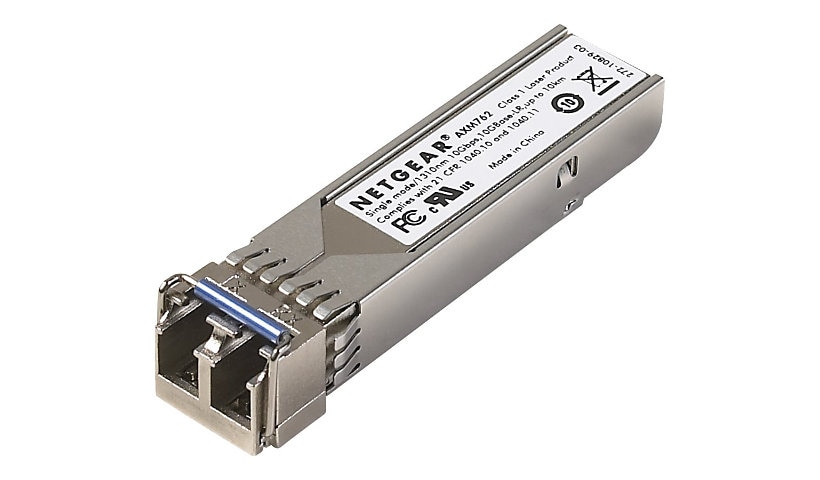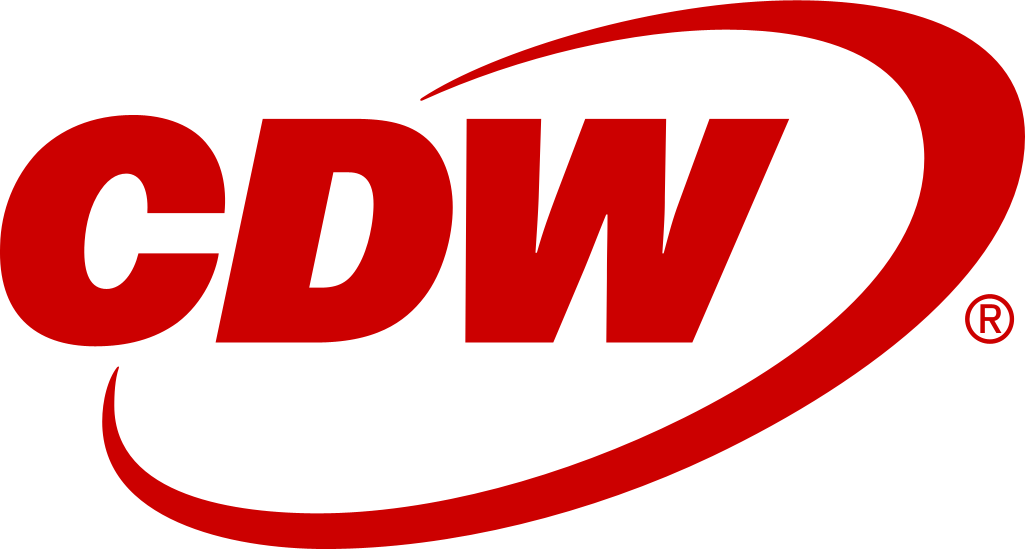
Quick tech specs
- 10 GigE
- up to 6.2 miles
- 10GBase-LR
- for NETGEAR GSM7228PS, GSM7252PS, GSM7328S, GSM7352S, M4300-28G-PoE+
Know your gear
This GBIC is built to insert into any one of the two built-in 10 GE SFP+ interfaces of GSM7328Sv2 and GSM7352Sv2, and into the 10GE SFP+ interface of AX743 adapter module for GSM73xxS/GSM73xxSv2. Once inserted (hot-swappable), the AXM761 10GBASE-LR SFP+ (LC connector) drives 10 Gigabit Ethernet up to 10 km distances with 9/125µm SMF single mode fiber cables, or up to 33 m distances with 62.5/125µm OM1 multimode fiber cables.
Add to Compare
Enhance your purchase
NETGEAR 10 Gigabit Ethernet LR Adaptor Module SFP+GBIC (AXM762) is rated
4.00 out of
5 by
2.
Rated 5 out of
5 by
Boas Hochstrasser from
Peak performance for uncompressed 4K video streaming at a very affordable price point
What is our primary use case?
As an engineering company who pioneered network-based AV solutions, we strongly rely on our in-house network backbone. It is fundamental for all required AV protocols, as well as for all of the standard network purposes which our company uses.
In our case, SDVoE, Dante (professional audio), office traffic, etc. flow on different VLANs which are incorporated into one single physical network infrastructure. Divided over two racks, three switches from the 4300 series are running in stacked mode and provide 10GbE connections to the SDVoE encoders and decoders from ZeeVee, as well as to all our other gear, including Dante devices, computers, access points, and phones.
How has it helped my organization?
With the NETGEAR 4300 series switches, we have been able to test, demonstrate, and provide training on the ZeeVee 10GbE SDVoE gear, which we distribute.
Thanks to the availability of 10GbE, we have been able to show the difference between compressed 4K video streaming over 1GbE and uncompressed 4K video streaming with the use of the SDVoE protocol and 10GbE.
However, 10GbE is Ethernet in another speed. We had to learn how to handle it. This knowledge will be useful in future projects. For example, one of our upcoming projects will have 24 encoders and 11 decoders with two M4300-96X NETGEAR switches.
What is most valuable?
* The stacking feature
* The web interface, which makes it easy to use and set up.
* The support for SDVoE
* The 10GbE port speed
It provides the ability to stack switches together, and this is a huge time saver! Having one interface to configure the complete system, especially when it comes to VLANs, helps a lot. This administration is something that is time consuming when all switches need to be configured individually. Thanks to stacking, you have VLANs available on all switches, and you can just select what you want.
Since it has a web interface, it is easy to set up. You don't have to take three years of training somewhere for a lot of money.
What needs improvement?
NETGEAR's web interface describes settings with names and sentences which are different from other switch manufacturers. Therefore, you must figure out what each one does before you can use it. If you compare it to Cisco, for example, their web interface is a bit more intuitive.
The web interface could also be improved when it comes to multicast settings. Especially, that IGMP is spread to “Switching” and “Routing“ is confusing. At first, it is unclear what needs to be setup where.
Support for IGMPv3 querier would be appreciated. Currently, only a version 2 querier can be sent by the switches, which is a bit outdated, since version 3 has been on the market for a few years now. Cisco does support querier version 3 in their small business switches.
The ‘how-to’ guides could do with some improvements. We got in trouble following the stacking and Dante set-up guides. If these would have been accurate, we would not have lost three days.
For how long have I used the solution?
We have been using this solution for three years now.
What do I think about the stability of the solution?
It has been very stable, since the initial stacking issues were solved. It simply runs, which is the best. You can plug it in, set it up, and you can forget about it. Surely, there will be maintenance tasks in the future, like firmware upgrades, which can be done in-house.
What do I think about the scalability of the solution?
You can combine up to eight units in a stack. For its price, it scales well. To get optimum performance for SDVoE, the uplink bandwidth between the switches needs to be designed carefully. We haven't seen any type of switch-related bottleneck issues, so far.
How are customer service and support?
Our issues are immediately escalated to Tier 3 support, which has been very good. However, there are some issues that have not yet been resolved.
Which solution did I use previously and why did I switch?
We were using and selling the Cisco Small Business 300 and 500 Series. But, a lot of different new firmware was being released for these switches, and with every firmware update came a different problem. The last thing you want is to have is a switch which behaves strange in your backbone, or on a project site. We just got fed up with it.
Seeing this, and the fact that Cisco does not have 10GbE hardware for a reasonable price, convinced us to switch to NETGEAR. Thanks to the increase in bandwidth, we were finally able to truly demonstrate the 10GbE solutions that we distribute.
Other than that, the change from Cisco to NETGEAR has not changed anything in our organization. Day-to-day things didn't change a lot and our office runs as always.
How was the initial setup?
At first, we stacked all switches together, then we started to configure the different VLANs. Just when we wanted to swap over to production, we recognized that there was a problem with the stacking configuration that we did.
The priorities of the switches must be set in a different way than we had assumed, so backup units can overtake management in case the main unit is down. If you don't set them properly, you somehow get the effect of the management switch changing from one to the other switch frequently.
Once this was resolved, we could switch over on the fly to production without any visible downtime and work normally.
Deploying Dante devices was also a bit problematic, since the stacked mode ‘how-to’ guides for Dante are not quite accurate, e.g., the setup of QoS resulted in a support case.
After configuring the VLAN (according to the manufacturer’s manual), we just plug in the SDVoE gear. This worked.
We implemented the 4300 series at the end of January. Altogether, our deployment took four days. Three days were lost on implementing Dante due to the weak ‘how-to’ guides.
What about the implementation team?
We did the deployment ourselves. There is no need to be an IT expert if you are deploying standalone. The web interface is common and easy to understand. You just need to know how to set up a switch. Only when it comes to the stacked mode, then you need to have IT knowledge. The rest of our team had no noticeable breaks during the transition.
What was our ROI?
We have saved time since we switched from Cisco to NETGEAR. With Cisco, firmware updates and troubleshooting afterwards were costing us hours. With NETGEAR, we update, and it all works as before.
What's my experience with pricing, setup cost, and licensing?
The pricing is very good for 10GbE switches and you get a lot of throughput. It is about 60 percent of the costs of other switches from competitive manufacturers, which is really good.
Which other solutions did I evaluate?
Since we were looking to go to 10GbE, our choices were either Cisco or NETGEAR.
Ubiquiti wasn't a consideration. When I have worked with them in the past, there have been many issues. Therefore, I would not consider using them as reliable backbone.
What other advice do I have?
To have unlimited, uncompressed, 4K transmission, you cannot go with 1GbE, you need 10GbE. The 4300 Series is the way to go.
We run two different High-Bandwidth AV over IP systems simultaneously and haven't seen any limitations yet.
Which deployment model are you using for this solution?
On-premises
Disclaimer: PeerSpot contacted the reviewer to collect the review and to validate authenticity. The reviewer was referred by the vendor, but the review is not subject to editing or approval by the vendor.
Date published: 2019-04-03T00:00:00-04:00
Rated 5 out of
5 by
reviewer2271660 from
A scalable product to manage a company's internal networking processes that needs to improve on the stability it offers
What is our primary use case?
My company uses NETGEAR Switches for internal networking purposes.
What is most valuable?
The most valuable feature of the solution is that it is easy to use.
What needs improvement?
The product's stability has certain shortcomings that need improvement.
For how long have I used the solution?
I have been using NETGEAR Switches for more than twenty-five years. I don't remember the version of the solution.
What do I think about the scalability of the solution?
It is a scalable solution.
More than 200 employees in our company use NETGEAR Switches.
How are customer service and support?
I have contacted NETGEAR's technical support for help with routers and not switches. I like NETGEAR's technical support.
How was the initial setup?
The solution is deployed on an on-premises model.
A team of three people formed from those who work as managers, admins, engineers, or developers in our company help with the deployment and maintenance of the solution.
What about the implementation team?
Our company's IT department carried out the product's installation phase in-house.
What was our ROI?
I have seen my company experience a return on investment from the use of NETGEAR Switches.
What's my experience with pricing, setup cost, and licensing?
It is a slightly expensive product.
My company needs to purchase no licenses to use the product.
Which other solutions did I evaluate?
I use D-Link Switches and Wi-Fi routers from NETGEAR.
What other advice do I have?
If the solution can be made available at a better price, then I would recommend the product to others who plan to use it.
I rate the overall solution a seven out of ten.
Which deployment model are you using for this solution?
On-premises
Disclaimer: I am a real user, and this review is based on my own experience and opinions.
Date published: 2023-09-14T00:00:00-04:00
